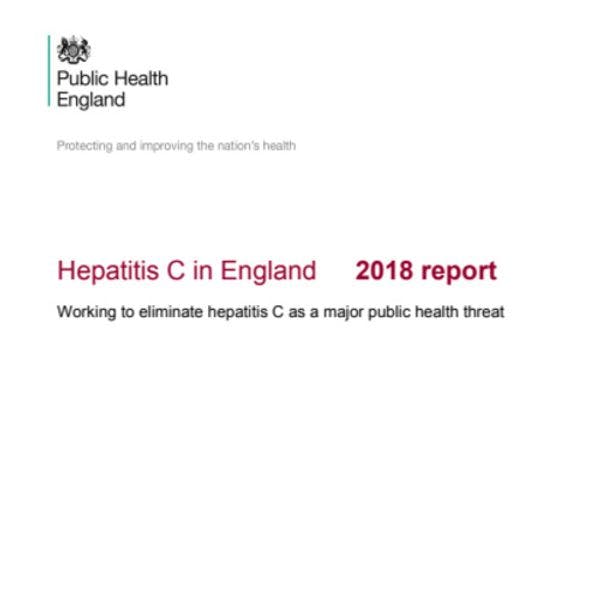Public Health England
Hepatitis C in England 2018 report
In May 2016, the UK signed up to the World Health Organization (WHO) Global Health Sector Strategy (GHSS) on Viral Hepatitis which commits participating countries to the elimination of hepatitis C (HCV) as a major public health threat by 2030. The current report summarises the scale of the HCV problem in 2016 in England, to help support focused action to meet our commitment to reduce the incidence of chronic HCV infection by 80% and HCV mortality by 65% by 2030 at the latest.
In 2015, there were an estimated 71 million people with chronic HCV infection worldwide. Most recent estimates suggest that around 160,000 people in England are living with chronic HCV infection, and modelling work is ongoing to update this estimate. Injecting drug use continues to be the most important risk factor for HCV infection, being cited as the risk in around 90% of all laboratory reports where risk factors have been disclosed. In 2016, 54% of people who had injected psychoactive drugs, participating in the Unlinked Anonymous Monitoring (UAM) Survey of people who inject drugs (PWID), tested positive for antibodies to HCV (anti-HCV), and this proportion has remained relatively stable over the past decade, although there is some evidence of an increase since 2011.
If we are to eliminate hepatitis C as a major public health threat, there are two main impact areas where we need to make progress: we need to reduce the numbers becoming seriously ill or dying from this infection, whilst at the same time reducing the number of people who become newly or re-infected. In England, our vision is that all people at risk of HCV infection should have access to testing and, once tested, that action should be taken to reduce their risk of infection and to prevent further transmission of the virus, or – if they are infected – to place the patient on a treatment pathway.
Against a background of rising HCV-related mortality that was predicted to increase in the future, the first fall in deaths in more than a decade, has been sustained for another year, with a 3% fall in deaths from HCV-related end stage liver disease (ESLD) and hepatocellular carcinoma (HCC) between 2014 and 2016. This suggests that increased treatment (a 19% increase in 2015/16 compared to earlier years, and 56% more in 2016/17 than in 2015/16) with new direct acting antiviral (DAA) drugs, particularly in those with more advanced disease, may be starting to have an impact. Falls have also been observed in liver transplant registrations (43% fall by 2016, when compared to pre-2014 levels) and liver transplants undertaken (25% fall by 2016, when compared to pre-2014 levels) in those where post-hepatitis C cirrhosis is given as the indication for transplant. These falls are encouraging although it is too early to rule out a degree of deferred listing pending assessment of the impact of treatment. Either way, as treatment is rolled out further, the WHO GHSS target for a reduction in HCV-related mortality of 10% by 2020 looks within our reach. Despite this, only around one half (52% in 2016) of people who had injected psychoactive drugs sampled in the UAM Survey were aware of their HCV antibody positive status, and this figure has remained relatively stable at this level over the last decade.
